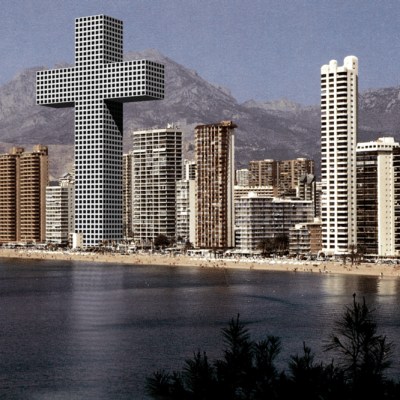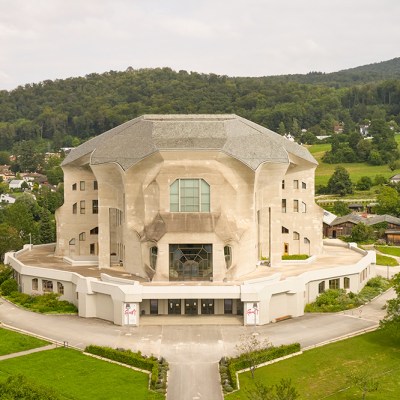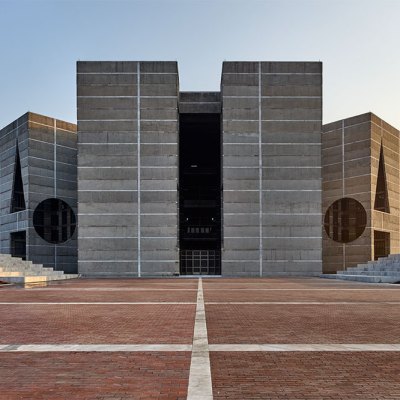There is a drawing that has haunted New York’s urban history – an incredible vision of what might have been. Paul Rudolph’s dense, meticulous perspective section for a structure above the Lower Manhattan Expressway, drawn in 1967, embodies the kind of visionary, utopian modernism that it is almost impossible to admire with critical detachment. As a drawing, it is magnificent. As a building, it might be worth remembering that this would have crushed beneath it the whole of SoHo and most of Little Italy. The proposal was, in fact, partly responsible for the backlash against modernism that stimulated the impulse to preserve whole historic districts, not just individual buildings.
Perspective drawing of the Lower Manhattan Expressway / City Corridor project (unbuilt), New York (c. 1967–72) by Paul Rudolph. Library of Congress

Paul Rudolph (1918–97), the subject of a show at the Metropolitan Museum of Art curated by Abraham Thomas, was a brilliant architect, but it was sometimes easier to appreciate his work from a distance. His building for the Yale Art and Architecture Building (1958–63), for instance, was so hated that it was set on fire. It is an uncompromising structure in which architecture students were given the best rooms, sculptors were consigned to a windowless basement and painters were banished to the top of the building in tiny studios with the wrong kind of light; the north-lit studios were given to town planners.
Perspective section drawing of the Art and Architecture Building, Yale University, New Haven (1958) by Paul Rudolph. Yale University Library

Yet Rudolph is also rightly revered as an inventive and gifted designer, a hugely influential teacher and a wise, generous man. His reputation has risen and fallen like a boat on a stormy sea, sometimes so precipitously that the shift is stomach-churning. Perhaps more than any other architect his work has suffered from demolition and disregard. When he died in 1997 he was seen as yesterday’s man. But Walter Gropius, the founder of the Bauhaus, who emigrated to the United States and became a prominent educator, regarded him as his most talented student. Now, with a show at the Met and an apparently revived reputation, Rudolph is very clearly back.
His full oeuvre is much more interesting that some of his later buildings might suggest, with exquisite modernist houses in Sarasota (many of which have since been demolished) and plenty of fine public buildings across the United States. His later career, when he was more or less shunned by American clients, played out mostly in Asia and included the mirror-shaded Lippo Towers in Hong Kong, which have stood up surprisingly well to time and competition from more flamboyant neighbours. In an age in which cars are becoming increasingly unfashionable, Rudolph’s Temple Street Parking Garage in New Haven still looks astonishing – so cool, in fact, that Rudolph posed there for a shoot for Vogue in 1963. Other charismatic structures, notably the Burroughs Wellcome headquarters (demolished in 2021), became popular as movie locations.
The Temple Street Parking Garage, New Haven, designed by Paul Rudolph and photographed by Ezra Stoller in 1962. Photo: © Ezra Stoller/Esto, Yossi Milo Gallery
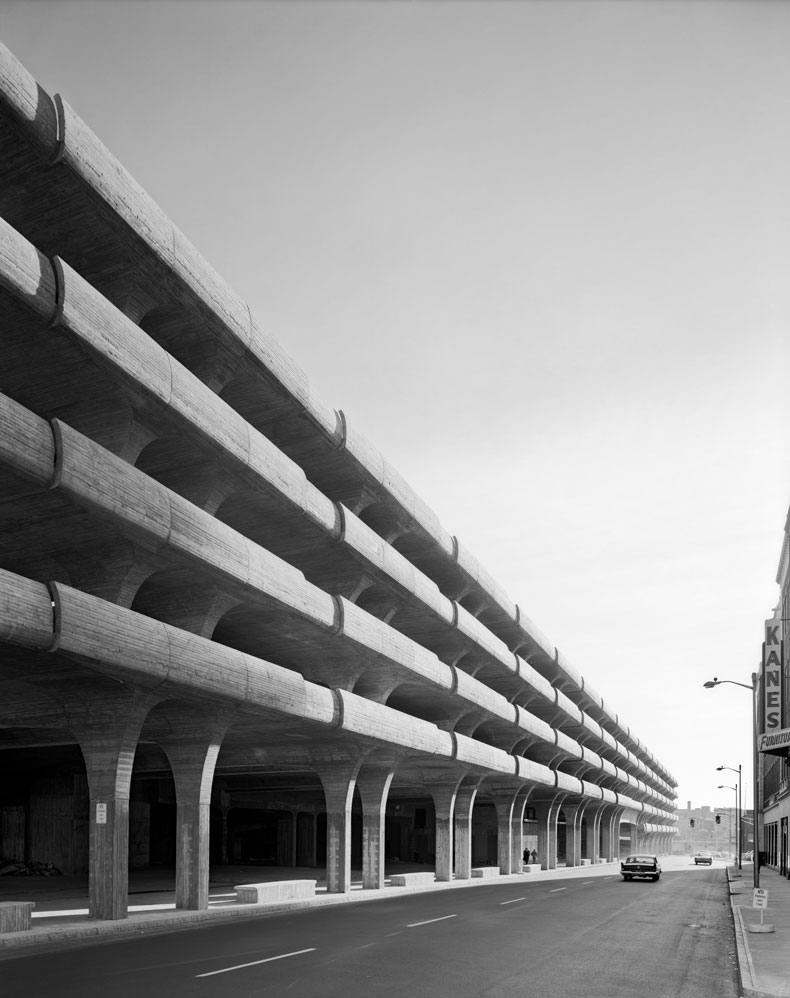
Rudolph was the prime example of an architect who was associated with a style that came to represent everything that was wrong with modern architecture. That Lower Manhattan proposal seems to us ludicrous – to destroy SoHo, now such a cherished (and expensive and desirable) neighbourhood and one that, even then, was a haven for artists and musicians. The public had begun to appreciate the past and notice its wholesale destruction. Preservation is itself a part of modernity; nostalgia for a better past is utterly modern.
Rudolph has not been alone on his journey. Brutalism, now the subject of endless coffee-table books, Instagram posts by concrete-fetishists and middle-class urban walking tours, was once deeply despised, seen as a source of social division, the result of failed policy and arrogant architects, its works invariably dubbed ‘concrete monstrosities’ by the media. Now that age of big government generosity, of plentiful decent social housing and public facilities, seems like a golden age. So brutal is back, with a vengeance. The brutalists themselves were keen on destroying Victorian architecture to make way for their megastructures. That kind of thing is now difficult to imagine, Victorian buildings seeming somehow splendid to us rather than tawdry, bourgeois and imitative. Other modernists, such as the Piero Portaluppi, were tainted for their willingness to work for fascists. Any disdain, however, seems to have faded away and there are few more cultishly admired designers today than the Milanese genius. Mid-century modernism used to be seen as granny-flat suburban dullness. Now its Danish and Italian examples fill the antique stores and auction rooms and decorate art fair stands.
Walker Guest House, Sanibel Island, designed by Paul Rudolph and photographed by Ezra Stoller in 1952. Photo: © Ezra Stoller/Esto, Yossi Milo Gallery

It’s difficult to appreciate the intense distaste for Rudolph and his contemporaries that once prevailed. Looking at his Modulightor Building on East 58th Street, a short stroll from his own mirrored, frankly still very cool residence in Beekman Street (with its white shag carpets and naff photo-mural), it looks a delicate thing, beautifully composed and blending respectfully and elegantly into the surrounding neighbourhood. The survival of the Hirsch house, later lived in and heavily partied in by the fashion designer Halston and his friends (who included Andy Warhol), was bought by Tom Ford for $18m in 2019. It’s also difficult to reconcile these wonderful, humane dwellings with an architect who did not really seem to care that most of his buildings were terrible places to work or study in. Rudolph was the model arrogant architect, a genius creator obsessed with his own visions in corduroy concrete.
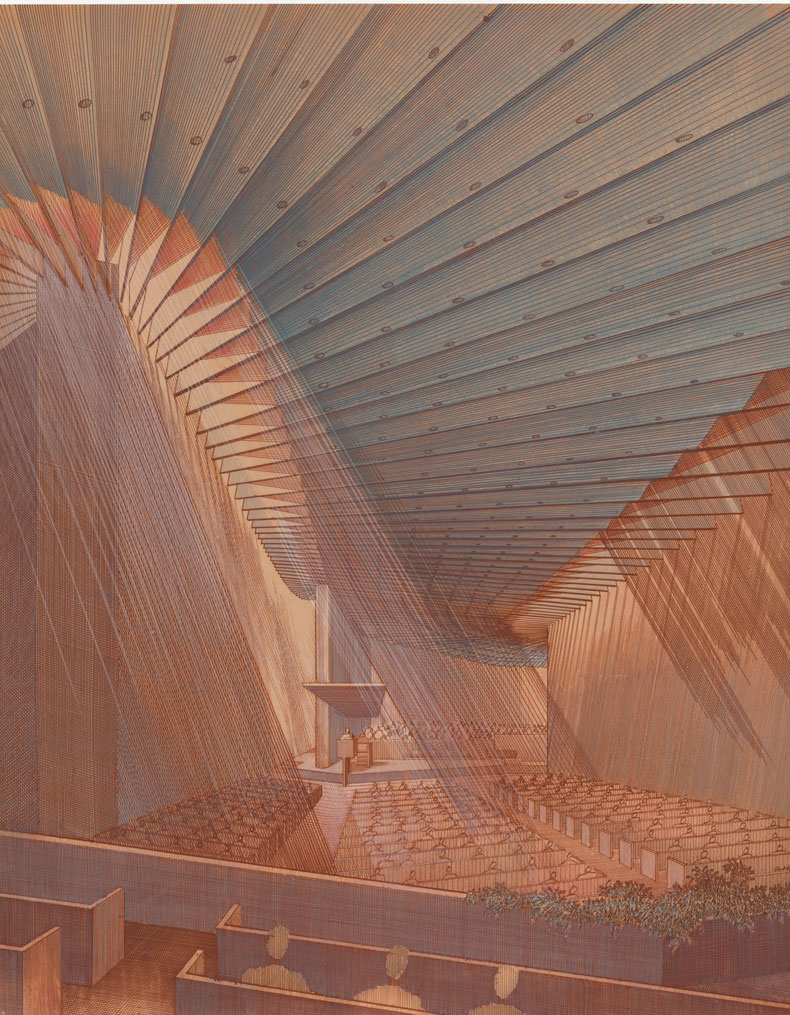
But as architecture’s back catalogue expands and more and more of its history is reassessed and rehabilitated, there is ever more to choose from. Rudolph’s character can be set aside: his buildings look superb in photos and, boy, could he draw. There is really no new architecture now, only iterations and rearrangements of what has come before, either in reality or in utopian visionary designs that were never realised. Like much contemporary music, design has become about sampling and building on what already exists. Revolution in architecture has rarely proved successful and the biggest ideas, like that Lower Manhattan Expressway, are better unbuilt, existing only as astonishing drawings.
Perspective section drawing of the Lower Manhattan Expressway / City Corridor project (unbuilt), New York (c.
1972), by Paul Rudolph. Museum of Modern Art, New York
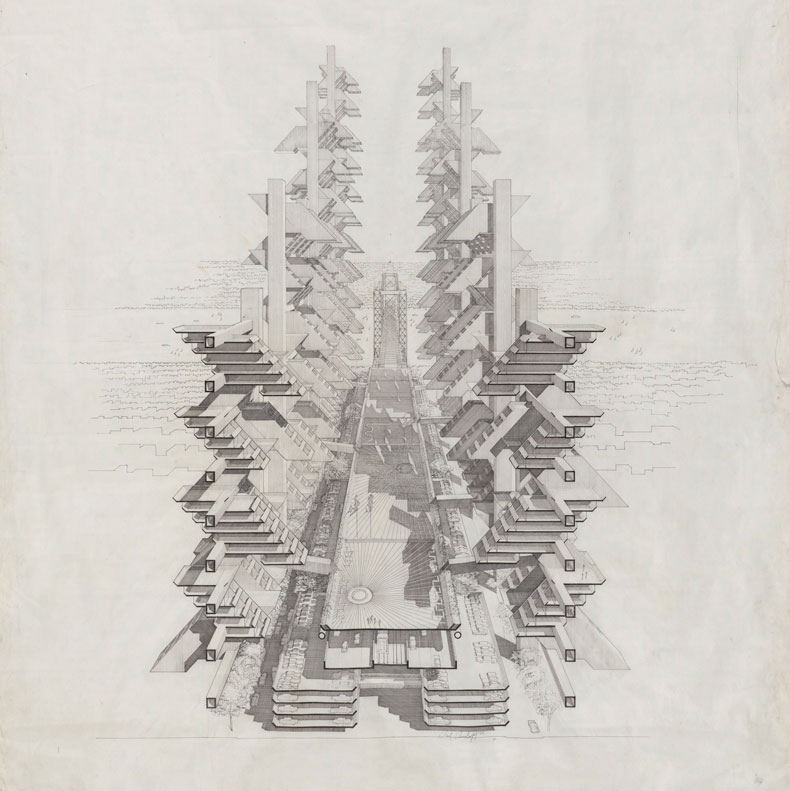
‘Materialized Space: The Architecture of Paul Rudolph’ is at the Metropolitan Museum of Art, New York, until 16 March 2025.

